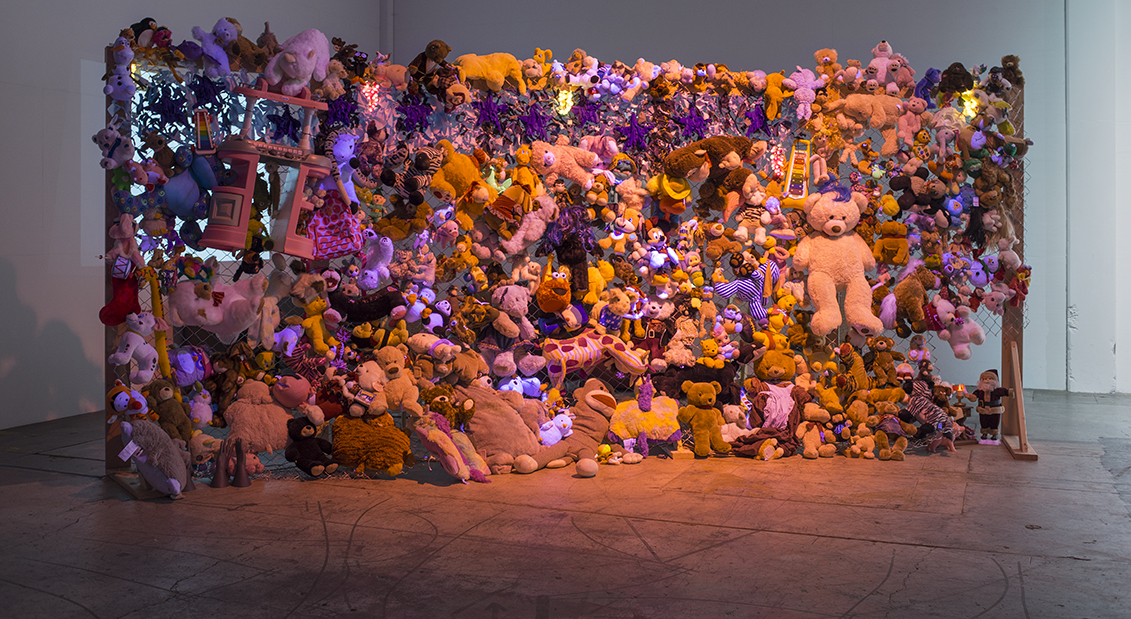

by Alex Joseph ’15
The Hunts Point Slave Burial Ground takes up an unassuming corner of Joseph Rodman Drake Park in the Bronx. The unmarked site was rediscovered in 2010, after the Museum of the City of New York uploaded a mysterious 1910 photograph with the phrase “Slave Burial Ground” scrawled on the back. Historians identified this sliver of land, just outside the perimeter fence of the Drake cemetery, as the location in the photo and began to investigate. The last person interred may have been “Aunt Rose,” a nanny who was enslaved on the nearby Abraham Legget estate and died in 1840. Gravestones marking the presence of perhaps a dozen or more enslaved people’s remains have disappeared over time. Here was a perfect place for the artist Abigail DeVille, Fine Arts ’09, to start a project.
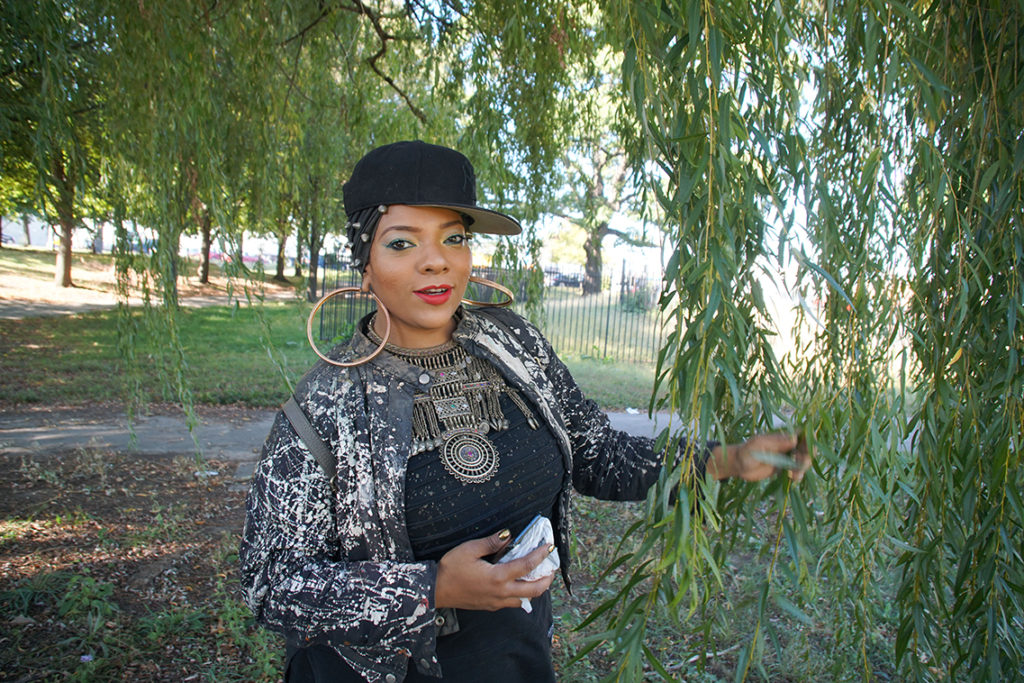
“If you’re having a conversation with history,” she says, “you’re really trying to understand the present.”
For DeVille, remembering is a form of resistance. She scours the landscapes of marginalized communities past, present, and gentrifying, and intuitively sources materials that speak to the locale’s hidden history. Toys, tools, floor tiles, fabric scraps: Where some see detritus, she finds clues to an obscured narrative, which she turns into immersive sculpture. “She combines the material in very intricate ways,” a New York Times critic wrote, “but still leaves the components warm with their individual histories.” Her 2017 piece No Space Hidden turned a gallery at the Los Angeles Institute of Contemporary Art into a hoarder’s apartment, replete with plastic hangers, pots, pans, ladders, hubcaps, and much more. Half Moon, a project for the Socrates Sculpture Park in Long Island City, assembled roofing plywood, bottles, plantation cocoa bean sacks, and (according to the artist) cat piss, into a queasy structure that resembled a beached, decaying sloop.

“I read recently about what our brains are doing when we remember something,” she says, “and we’re not remembering the actual experience; we’re just remembering the last time we remembered.” The messiness in her work “reflects the inability to accurately understand or interpret the past. History speaks to us through imprints on a landscape, or snippets in a book, or an interview, or an audio recording, but even all those things put together don’t equal the original event. But it’s still worthwhile to try to remember.”
:::
It was a gorgeous day in the Bronx. Drake Park occupies a lone, grassy city block surrounded by auto body shops and produce wholesalers. There was scant evidence of the enslaved people whose lives ended two centuries ago. DeVille passed over stray burger wrappers and plastic bottles, and paused beneath a lush willow that grew at the approximate burial ground site. She considered the tree carefully.
She grew up in this borough. Her recent piece Homebody at the Andrew Edlin Gallery in Soho, drew on the story of her family, which DeVille situates within the narrative of the Great Migration: Among the six million Black people who fled the rural South to escape racial segregation and Jim Crow laws, her forebears moved from Richmond, Virginia, to New York in the 1930s. DeVille continually returns to the question of her ancestry: “Both of my parents have small families, and both grandfathers were orphans, so I constantly wonder, where do we really come from and who are we?” Four generations lived together in one Bronx apartment; in 2012, when they moved, DeVille collected the floor tiles that her great-grandmother installed in 1970. For Homebody, the artist covered a whole wall with the tiles, scuffed and scarred from years of wear.
For college, thinking her niche might be in commercial art, she initially chose an Illustration program at the Pratt Institute. After a year, she dropped out and worked as a messenger. Her parents weren’t happy; a friend of theirs who was a dean at FIT told DeVille about the Fine Arts program.
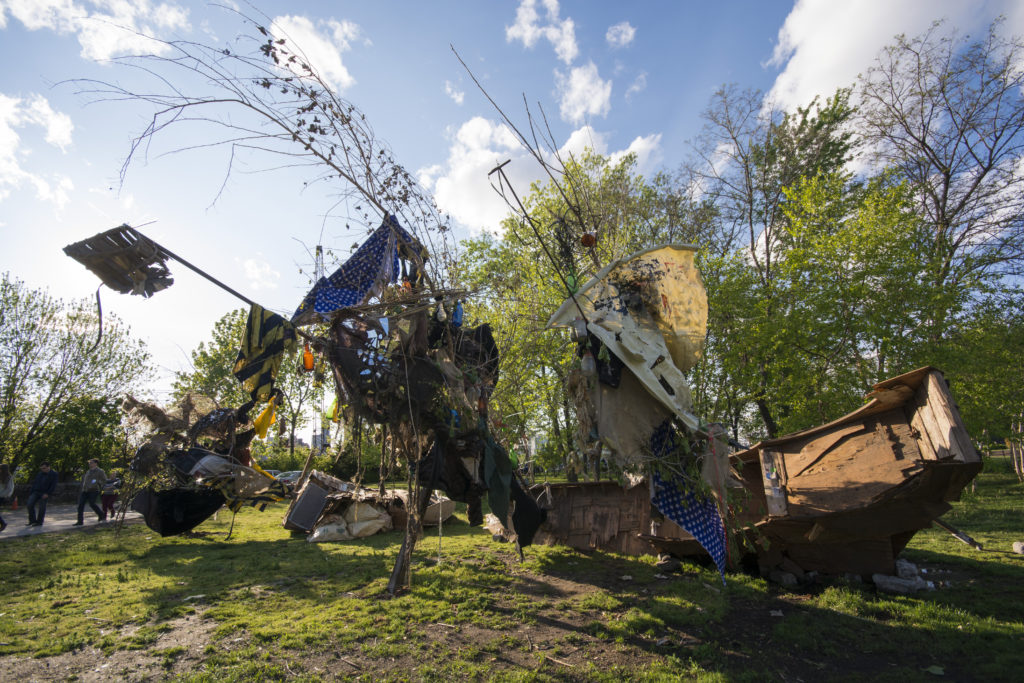
She learned to work big. An early exposure to Jackson Pollock’s enormous works enticed her with the possibilities of scale. At FIT, she made paintings that were 14 by 17 feet—so large that they had to be suspended from a parking garage roof to be photographed. “Maybe part of it was unconsciously, ‘I’m going to be as obnoxious as possible with the space I take up,’” she says with a laugh. “Being obnoxious is necessary—you’re pushing against the limits of the institution.” When DeVille couldn’t afford materials for an oil painting class taught by Don Perlis, she began her practice of gathering whatever was available for free: Posters advertising albums and clubs displayed in the streets around the college became her canvas. Her experience helped in another way, too: In most art programs, students must choose a medium; at FIT, she was exposed to them all. Now, she says, when she thinks about how to convey an idea, she can choose freely among methods.
:::

At the base of the willow, the artist knelt. Removing a small metal tool from her knapsack, she began digging in the dirt. Though DeVille had invited a journalist and a photographer specifically to observe this activity, watching felt intimate, even voyeuristic. She scratched at the earth with intense concentration and put soil, along with a leafy branch, into a big white plastic bag.
:::
DeVille’s work has risen to prominence at the same time as the traditional narrative of American history has come into question. The New York Times’ controversial 1619 Project places slavery at the foundation of the national story. What were known as the Tulsa Race Riots, now better understood as the slaughter of hundreds of Black people, are called the Tulsa Race Massacre; and across the South, monuments to the Confederacy are coming down. Right now, our history does indeed feel like a decaying ship or hoarder’s closet; it’s hard to know what to focus on or believe.
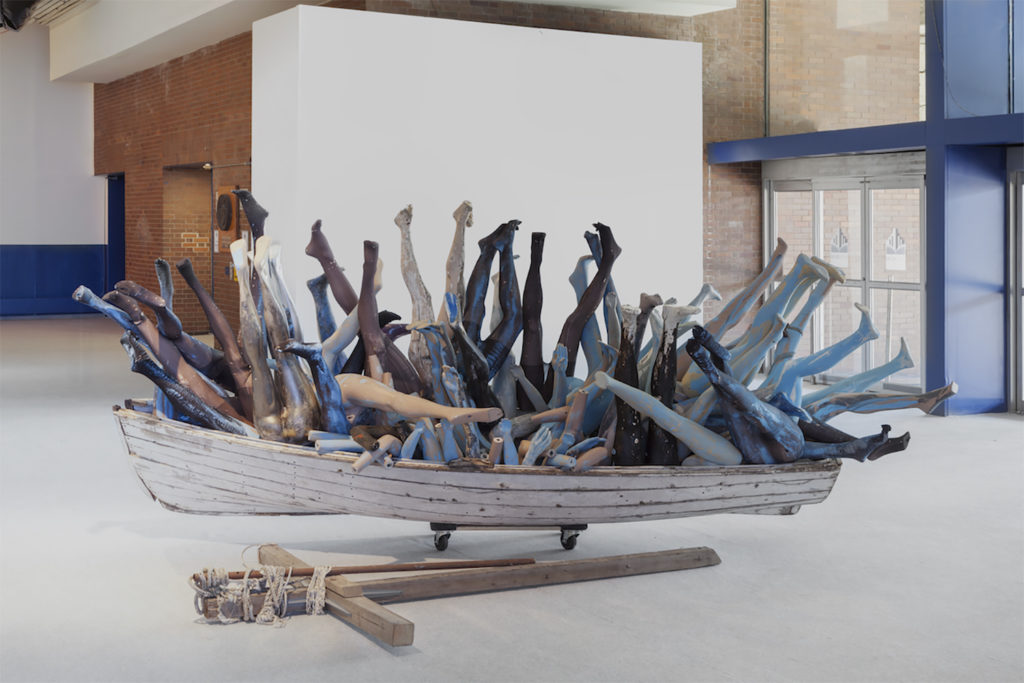
Perhaps as a result, DeVille’s salvaging projects feel increasingly essential. Since earning her MFA from Yale in 2011, she has participated in numerous exhibitions (including at the Whitney Museum of American Art and the Portland Institute for Contemporary Art), received prestigious grants (a U.S. Artists Fellowship, Marion T. Mitchell Rome Prize, a Joan Mitchell Foundation award), and residencies (at the Studio Museum of Harlem and the Robert Rauschenberg Foundation). Her work is regularly reviewed in the Times, Artforum, and many other outlets. Art is her day job.
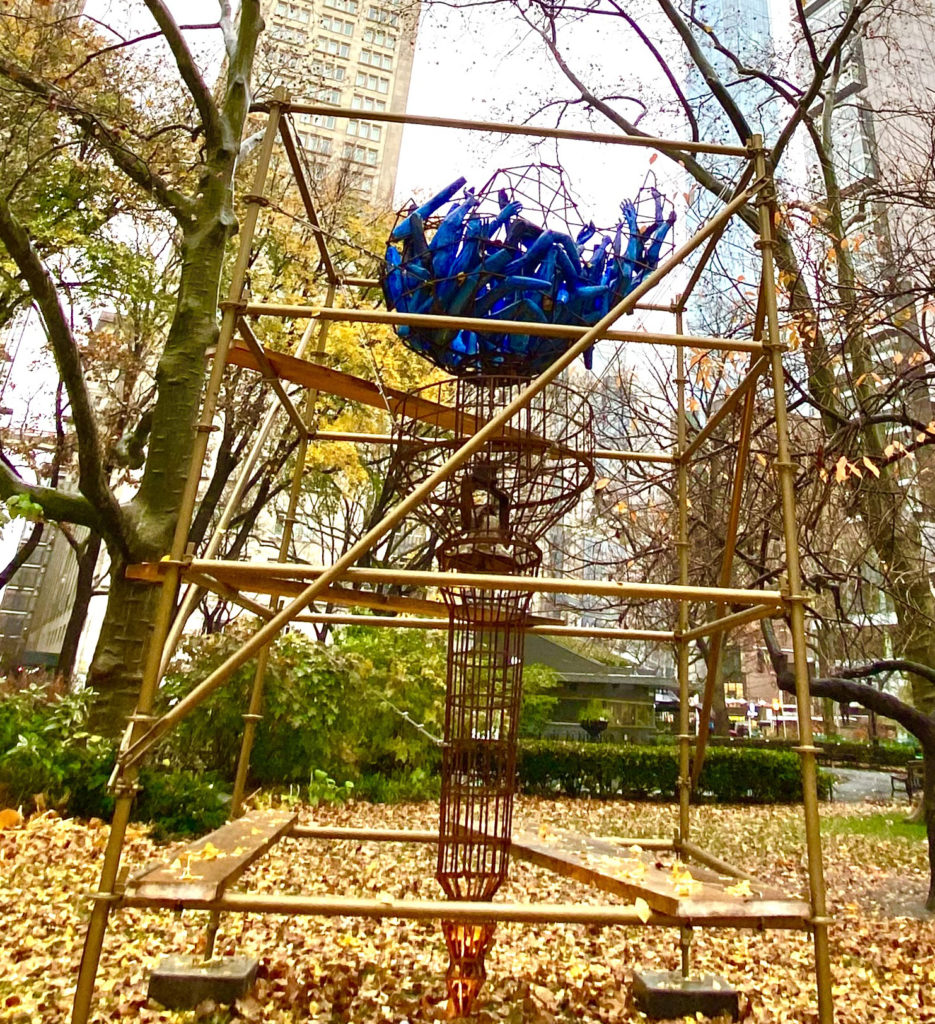
Last fall, Madison Square Park hosted Light of Freedom, DeVille’s reimagining of the Statue of Liberty’s hand and torch. From 1876 to 1882, the original was exhibited in the park while funds were raised to complete the statue. This fact, along with reflections about the Black Lives Matter protests, inspired DeVille to represent the torch swaddled in scaffolding: “It’s this idea of freedom being constantly under construction and reconstruction.” The base of DeVille’s piece encloses a weathered bell, and the flame is composed of mannequin arms painted blue, as if reaching for the liberty that has so far eluded them. The piece feels like a big, culminating statement, neither cerebral nor bleak. “The protests were positive,” DeVille says. “The beacon of hope is unfulfilled, but it’s still there.”
:::
It wasn’t clear what DeVille planned to do with the dirt and tree limb, but it’s likely to be incorporated, somehow, into a future project. She headed out of the park. Behind her, the willow branches swayed. For a moment, the thousands of leaves recalled components of a DeVille sculpture. Nourished by the soil, they turned in the breeze, each one a flickering, viable entity.
Top photo: “American Future” by Abigail DeVille.